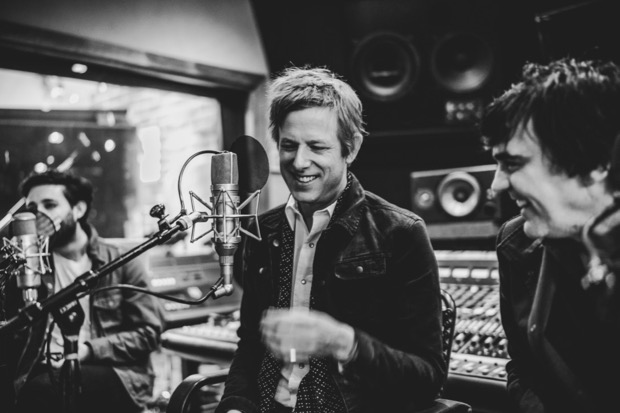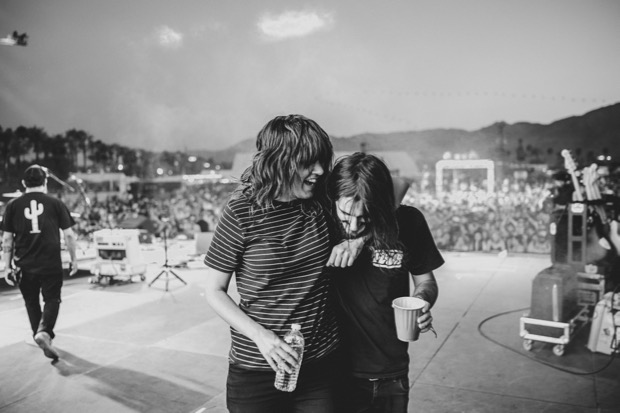Canon have officially launched the Canon 6D Mk II and the EOS Rebel SL2. On paper they both look like decent stills cameras, but if you're still holding out for affordable 4K video from a Canon DSLR then you will be disappointed. Both cameras are limited to HD resolution with capture up to 60p.
This latest announcement only reaffirms what we already know. If you want a Canon camera for video, you need to get a C100, C300, or C700. Yes, I almost forgot the 5D Mk IV, but you can only record 4K using a crop of the sensor. In 2017 there is absolutely no reason why a camera like the 6D Mk II or EOS Rebel SL2 shouldn't be able to record UHD or 4K. All of Canon's main competitors have 4K-capable mirrorless or DSLR cameras.
EOS 6D Mk II
6D Mk II
The EOS 6D Mk II camera uses a full frame 26.2 Megapixel (approx. 35.9mm x 24.0mm) CMOS sensor and DIGIC 7 image processor in a DSLR body that weighs 765g. The camera features Dual Pixel CMOS AF that enables continuous automatic AF and AF tracking for stills and video. The camera features an ISO range of 100–40,000 for still and video capture.
The 6D Mk II also gets a Vari-angle touchscreen three inch ClearView LCD II monitor which makes it the first full frame Canon camera to have an articulating screen. This is really something they should have put on the 5D Mk IV.
For video shooters the 6D Mk II records in MOV, MP4, MPEG-4 AVC/H.264 @ 1920 x 1080: 59.97fps, 50fps, 29.97fps, 25fps, and 23.98fps. Video record times are limited to 29 Minutes, 59 Seconds. There is a 4K (UHD) time-lapse mode that connects still pictures to create a movie at either 29.97p or 25p at 500Mbps in Motion JPEG.
HD capture is at the following bitrates when recording in MP4:59.97p and 50p: 60Mbps29.97p, 25p, 23.98: 30Mbps
There is a built-in mic and Canon offers a small external video microphone. Also available is an HDMI out, but the camera doesn't have a headphone jack.
The camera has built-in Wi-Fi, NFC, Bluetooth, and GPS capability. You can use the free Canon Camera Connect app on a compatible iOS or Android device to shoot remotely from a distance, with control of settings such as aperture, shutter speed, ISO, focus and shutter release. Still images can be transferred between two wireless-enabled Canon cameras over a Local Area Network (LAN). Images and video can also be uploaded to the Canon Image Gateway.
The Canon 6D Mk II is now available to pre-order for $1,999 US.
EOS Rebel SL2The Canon EOS Rebel SL2 camera uses a 24.2 Megapixel CMOS (APS-C) sensor and DIGIC 7 Image Processor with Dual Pixel CMOS AF. It also has Vari-angle touchscreen LCD which should make it a good option for Vloggers.

The Rebel SL2
Just like the 6D Mk II the EOS Rebel SL2 camera can capture Full HD movies at up to 60p at the exact same bitrates. The camera has an external microphone input as well as its internal microphone. Again there is no headphone jack.
The EOS Rebel SL2 will retail for $549 US
Canon 6D Mk II and EOS Rebel SL2: is this enough for video shooters?Even though these cameras are aimed squarely at photographers, a lot of shooters now want to record both video and stills. The lack of 4K and no headphone jack on either of these cameras is a major oversight in my opinion and is sure to send potential buyers straight over to Sony or Panasonic.
What do you think about the canon 6D Mk II? Has Canon missed the boat again? Let us know in the comments section below.
Source: Canon 6D Mk II and EOS Rebel SL2 – HD cameras trapped in a 4K world















 From tourist to hipster. I'm not a fan of traditional camera straps, but this one as seen above on a smirking bro works great.
From tourist to hipster. I'm not a fan of traditional camera straps, but this one as seen above on a smirking bro works great. 













 The Panasonic Lumix GH5 has a new 20 megapixel sensor, 5-axis image stabilisation, and a 3.2 inch vari-angle touch screen. The GH5 is capable of shooting in 6K at 30fps and offering 18 megapixel still images. There is also 12 fps continuous shooting.
The Panasonic Lumix GH5 has a new 20 megapixel sensor, 5-axis image stabilisation, and a 3.2 inch vari-angle touch screen. The GH5 is capable of shooting in 6K at 30fps and offering 18 megapixel still images. There is also 12 fps continuous shooting. The Sony Alpha A6500 offers a number of upgrades from the previous model including built-in 5-axis image stabilisation, a tilting touch screen and improved grip to name a few. It features a 24 megapixel sensor, weather sealing and 4K video with 8 megapixel stills. It's also Wi-Fi, NFC and bluetooth capable.
The Sony Alpha A6500 offers a number of upgrades from the previous model including built-in 5-axis image stabilisation, a tilting touch screen and improved grip to name a few. It features a 24 megapixel sensor, weather sealing and 4K video with 8 megapixel stills. It's also Wi-Fi, NFC and bluetooth capable.



